
Jaco: Costa Rica's Coastal Gem
Discover Jaco, Costa Rica's vibrant beach town with stunning shores, thrilling adventures, rich wildlife, and lively nightlife. Perfect for surfers, nature lovers, and culture enthusiasts.
Jaco, nestled on the Pacific coast of Costa Rica, is a vibrant beach town known for its stunning natural beauty and lively atmosphere. This small town is a paradise for surfers, with consistent waves that attract both beginners and seasoned pros from around the world. The golden sands stretch for miles, providing plenty of space for sunbathing, beach volleyball, and leisurely strolls along the shore. Beyond the beach, Jaco offers a rich variety of activities. Adventure seekers can explore the lush surrounding rainforests on guided tours, where you might spot exotic wildlife like monkeys, toucans, and sloths. For a thrilling experience, try zip-lining through the canopy or take an ATV tour through rugged trails. The town is also a gateway to some of Costa Rica's famous national parks, such as Carara National Park, known for its diverse bird species and crocodile-inhabited Tarcoles River. Jaco's nightlife is another highlight, with an array of bars, clubs, and restaurants that come alive after the sun sets. Sample delicious Costa Rican cuisine, fresh seafood, or international dishes at one of the many eateries. The town's vibrant arts scene is reflected in its colorful murals and local galleries, offering unique souvenirs and artworks. Whether you're looking to surf, explore the natural wonders, or simply relax and enjoy the local culture, Jaco has something for everyone. Its warm, welcoming vibe makes it an ideal destination for a memorable vacation.
Local tips in Jaco
- Visit during the dry season (December to April) for the best weather.
- Bring plenty of sunscreen and insect repellent for the beach and jungle.
- Try the local dish 'casado' for an authentic Costa Rican meal.
- Stay alert while swimming as the currents can be strong.
- Book tours and activities in advance, especially during peak season.
Jaco: Costa Rica's Coastal Gem
Jaco, nestled on the Pacific coast of Costa Rica, is a vibrant beach town known for its stunning natural beauty and lively atmosphere. This small town is a paradise for surfers, with consistent waves that attract both beginners and seasoned pros from around the world. The golden sands stretch for miles, providing plenty of space for sunbathing, beach volleyball, and leisurely strolls along the shore. Beyond the beach, Jaco offers a rich variety of activities. Adventure seekers can explore the lush surrounding rainforests on guided tours, where you might spot exotic wildlife like monkeys, toucans, and sloths. For a thrilling experience, try zip-lining through the canopy or take an ATV tour through rugged trails. The town is also a gateway to some of Costa Rica's famous national parks, such as Carara National Park, known for its diverse bird species and crocodile-inhabited Tarcoles River. Jaco's nightlife is another highlight, with an array of bars, clubs, and restaurants that come alive after the sun sets. Sample delicious Costa Rican cuisine, fresh seafood, or international dishes at one of the many eateries. The town's vibrant arts scene is reflected in its colorful murals and local galleries, offering unique souvenirs and artworks. Whether you're looking to surf, explore the natural wonders, or simply relax and enjoy the local culture, Jaco has something for everyone. Its warm, welcoming vibe makes it an ideal destination for a memorable vacation.
When is the best time to go to Jaco?
Iconic landmarks you can’t miss
Ridiculous Burgers
Discover Ridiculous Burgers in Jaco, Costa Rica - a burger lover's paradise offering gourmet selections in a lively ambiance.
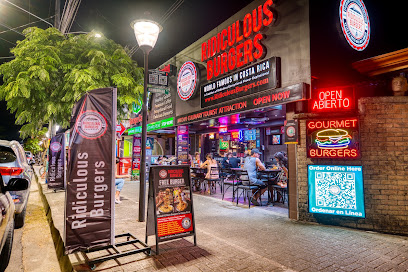
Mirador de Jacó
Experience the panoramic beauty of Costa Rica at Mirador de Jacó, where breathtaking views and serene landscapes await every visitor.
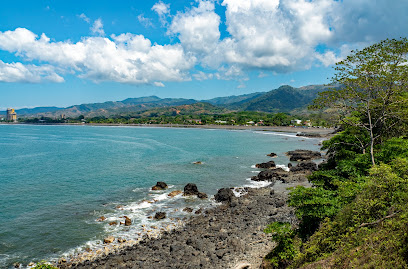
Jacó Rústico
Delight in the vibrant flavors of Costa Rica at Jacó Rústico, a top breakfast and coffee destination in the heart of Jacó.
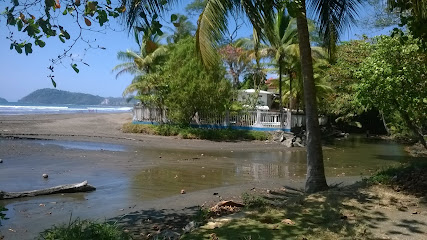
Jacó Walk Shopping Center
Discover the vibrant Jacó Walk Shopping Center in Costa Rica, offering a unique blend of shopping, dining, and entertainment in a lively atmosphere.
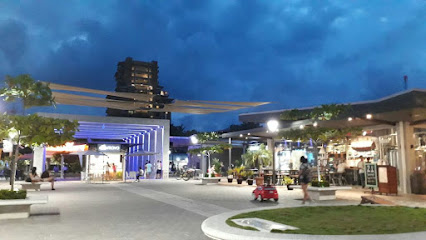
El Miro
Discover breathtaking views of Jaco Beach at El Miro, a stunning observation deck nestled in the heart of Costa Rica's natural beauty.
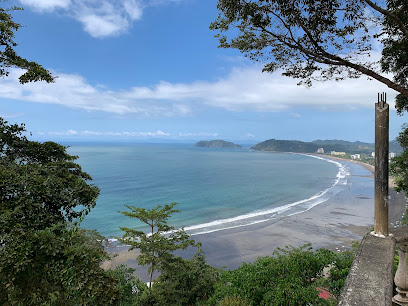
Jaco Beach
Experience the perfect blend of relaxation and adventure at Jaco Beach, Costa Rica's vibrant coastal paradise with stunning sunsets and thrilling activities.
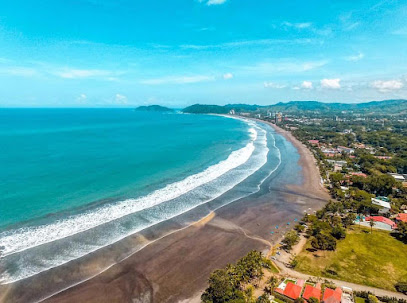
Green Room Cafe Bar
Experience the vibrant flavors of Costa Rican cuisine at Green Room Cafe Bar in Jacó, where delicious food meets a relaxed coastal atmosphere.
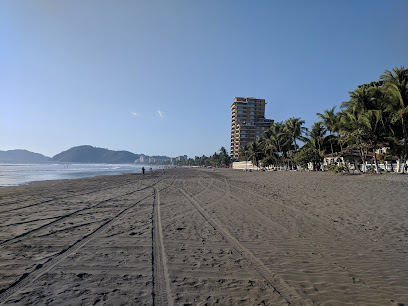
Marea Alta
Experience the best of Costa Rican cuisine at Marea Alta, a must-visit restaurant in Jacó offering fresh seafood and local flavors.
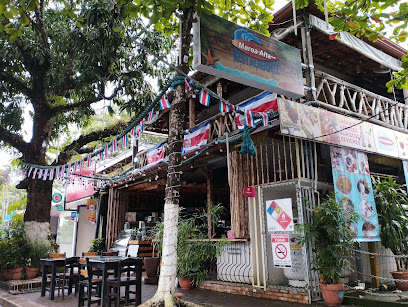
Pachis Pan and Bakery
Discover the authentic flavors of Costa Rica at Pachis Pan and Bakery, a charming café in Jaco known for its delicious pastries and rich coffee.
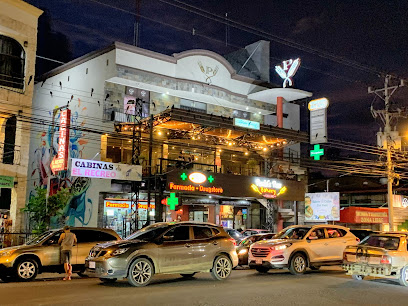
Diamante del Sol - Jaco Paradise
Discover luxury and comfort at Diamante del Sol - Jaco Paradise, your ideal getaway on Costa Rica's stunning Pacific coast.

Adventure Tours Costa Rica
Unleash your adventurous spirit with thrilling activities at Adventure Tours Costa Rica in Jaco – experience nature like never before!
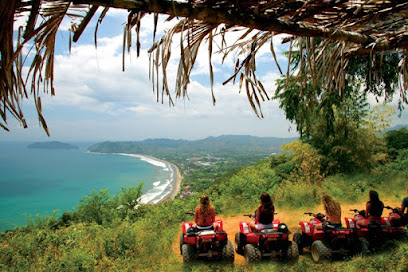
PuddleFish Brewery
Discover the vibrant flavors of craft beer and local cuisine at PuddleFish Brewery, your go-to brewpub in the heart of Jaco, Costa Rica.
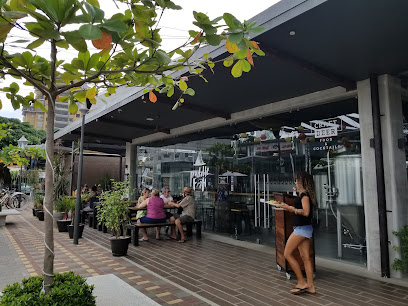
Jacó Bar
Indulge in the vibrant flavors of Costa Rica at Jacó Bar, where savory grilled dishes meet a laid-back tropical atmosphere.
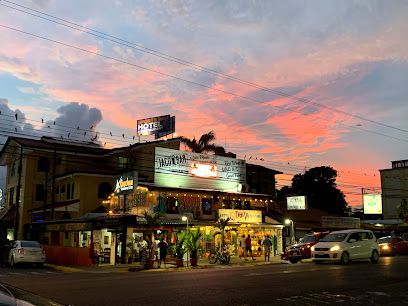
INFIERNO - Wood Fired Pizzeria & Grill
Discover the authentic taste of Italy at INFIERNO - Wood Fired Pizzeria & Grill in Jaco, Costa Rica, where delicious flavors and a vibrant atmosphere await.
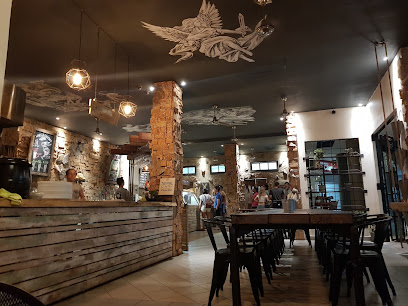
Taco Joint
Discover the authentic taste of Mexico at Taco Joint in Jaco, Costa Rica, where delicious tacos and a vibrant atmosphere await you.
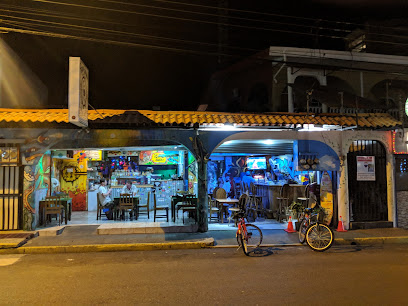
Unmissable attractions to see
Mirador de Jacó
Experience stunning panoramic views of the Pacific coast at Mirador de Jacó, a must-see observation deck in Playa Hermosa, Costa Rica.
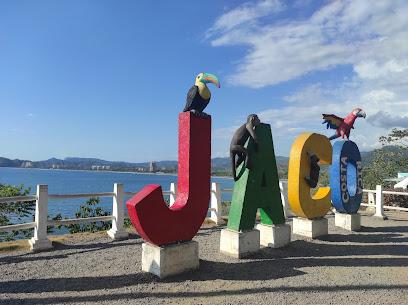
Muelle de Cruceros Cruise port
Explore the vibrant Muelle de Cruceros in Puntarenas, Costa Rica—the perfect gateway to breathtaking natural wonders and rich local culture.
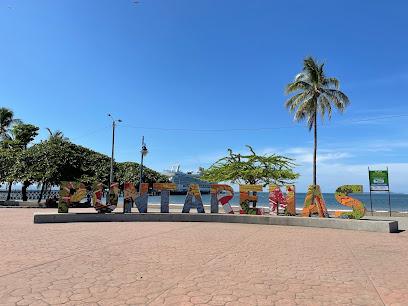
Parque Nacional Carara
Explore the unparalleled biodiversity and stunning landscapes of Parque Nacional Carara, a must-visit destination for nature lovers in Costa Rica.

El Miro
Experience stunning views of Jaco and the Pacific coastline at El Miro, a must-visit observation deck in Costa Rica's breathtaking landscape.
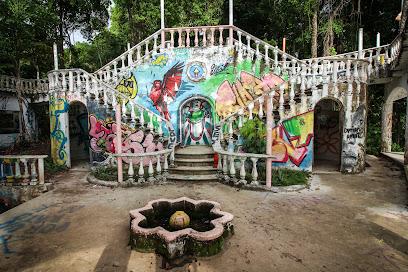
Vista Los Sueños Adventure Park
Discover the thrill of zip-lining, horseback riding, and nature exploration at Vista Los Sueños Adventure Park in Playa Herradura, Costa Rica.
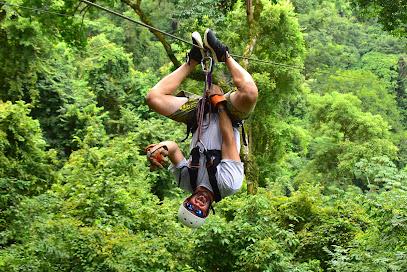
Curú Wildlife Refuge
Explore Curú Wildlife Refuge in Costa Rica, a sanctuary for diverse wildlife and stunning ecosystems, offering unforgettable eco-tourism experiences.
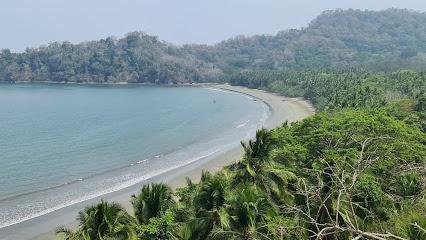
Guacalillo Cliff
Discover stunning ocean views and lush landscapes at Guacalillo Cliff, a premier observation deck in Costa Rica's Puntarenas Province.
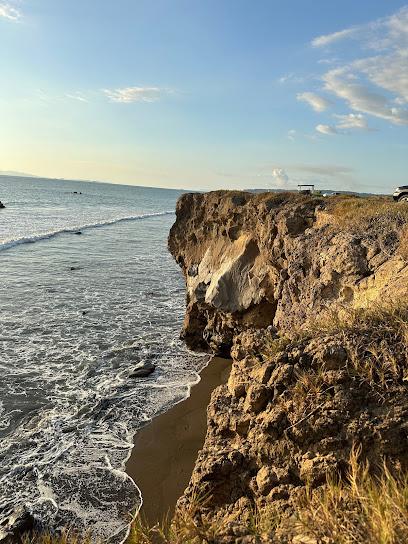
Playas De Doña Ana
Experience the serene beauty of Playas De Doña Ana, a hidden beach paradise in Costa Rica's Golfo de Nicoya, perfect for relaxation and adventure.

Adventure Tours Costa Rica
Experience the thrill of Costa Rica with Adventure Tours, your premier destination for unforgettable outdoor adventures in Jaco.
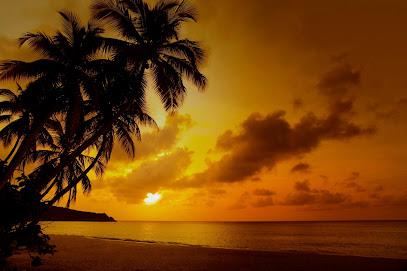
Rainforest Adventures Jaco
Explore the wonders of nature at Rainforest Adventures Jaco, where adventure meets the breathtaking beauty of Costa Rica's rainforest.
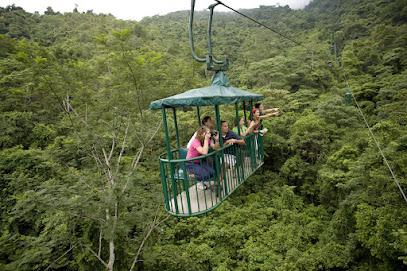
Playa Mantas
Explore the tranquil allure of Playa Mantas, a hidden gem in Puntarenas Province, perfect for sun-seekers and adventure enthusiasts alike.
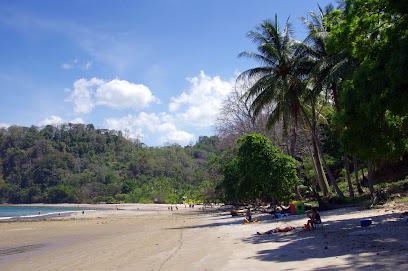
Jungle Crocodile Safari & Bird Watching Tour
Discover the breathtaking wildlife of Costa Rica at the Jungle Crocodile Safari & Bird Watching Tour in Tarcoles, a perfect blend of adventure and education.
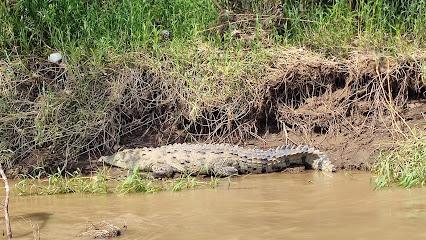
Bejuco Beach
Experience the tranquil beauty of Bejuco Beach in Puntarenas Province, Costa Rica - a perfect getaway for relaxation and adventure.
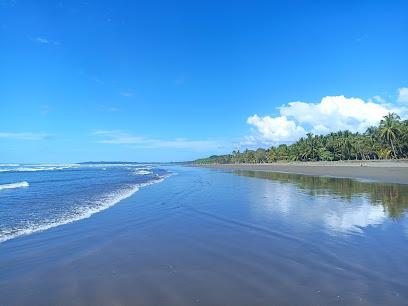
The Park At Ocean Ranch
Explore the wonders of nature at The Park At Ocean Ranch, a premier theme park in Quebrada Amarilla, offering thrilling outdoor adventures for all ages.

Isla Tortuga
Discover Isla Tortuga, a tropical paradise in Costa Rica's Puntarenas Province, where pristine beaches and vibrant marine life await your arrival.

Essential places to dine
Ridiculous Burgers
Experience mouthwatering burgers crafted with fresh ingredients in the heart of Jaco at Ridiculous Burgers.
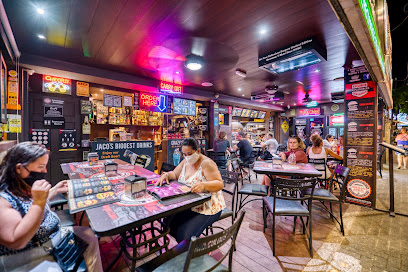
Jacó Rústico
Discover authentic Costa Rican breakfast delights at Jacó Rústico - your go-to spot for delicious food and fresh coffee in Jaco.

Soda Garabito
Discover authentic Costa Rican breakfast delights at Soda Garabito in Jaco – a culinary treasure trove for food lovers.
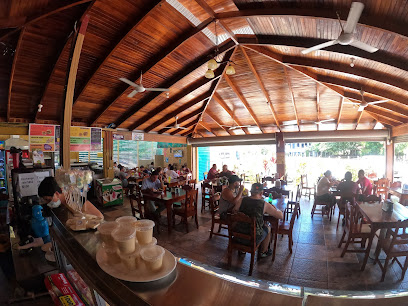
Public House Jaco Grill
Discover the flavors of Asia and traditional grilling at Public House Jaco Grill, where every meal is a delightful adventure.
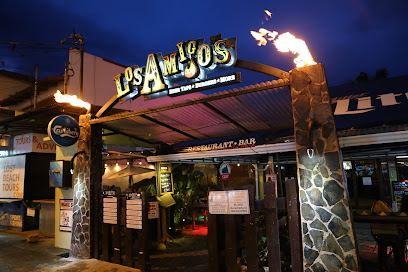
Green Room Cafe Bar
Experience authentic Costa Rican flavors at Green Room Cafe Bar in Jacó—perfect for breakfast, lunch, or drinks in a vibrant atmosphere.
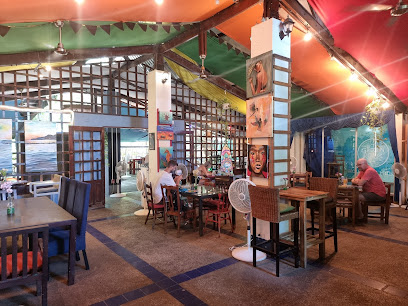
Tacobar JacoWalk
Experience authentic Costa Rican cuisine at Tacobar JacoWalk in Jacó - where flavor meets vibrant ambiance!
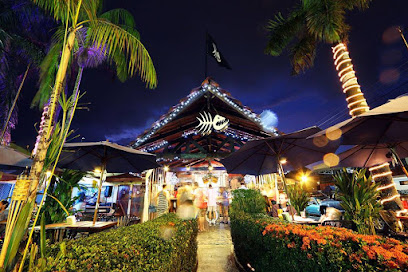
Isaga
Experience the best grilled flavors at Isaga in Jaco – where every meal is a celebration of Costa Rican cuisine.

El Hicaco Seafood
Experience exquisite seafood dining with stunning ocean views at El Hicaco Seafood in Jacó, Costa Rica.
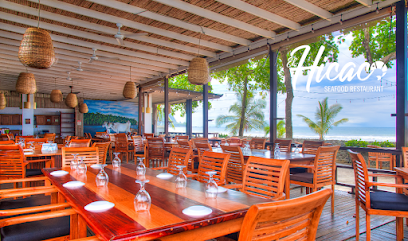
Marea Alta
Experience the best of coastal cuisine at Marea Alta in Jacó, where fresh seafood meets stunning ocean views.

Jerah Thai Restaurant
Experience authentic Thai flavors at Jerah Thai Restaurant in Jacó – a culinary gem offering organic, gluten-free options in a cozy setting.
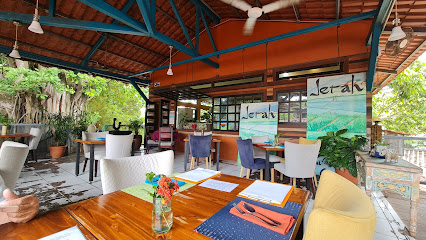
Tsunami Sushi
Experience exquisite sushi at Tsunami Sushi in Jacó - where fresh ingredients meet modern culinary artistry.
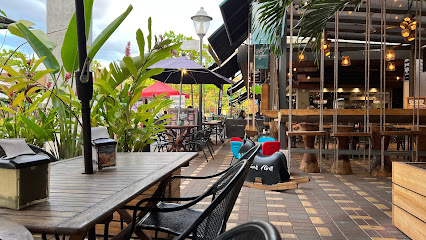
KoKo Gastro Bar
Experience the best of Costa Rican cuisine at KoKo Gastro Bar in Jacó - where every bite is a celebration of flavor.
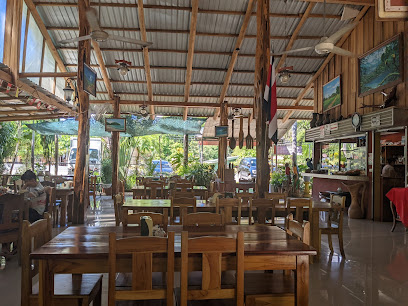
Ohana Sushi, Tapas Y Bar
Experience fresh sushi and delightful tapas at Ohana Sushi & Tapas Bar in Jacó – where vibrant flavors meet Costa Rican charm.
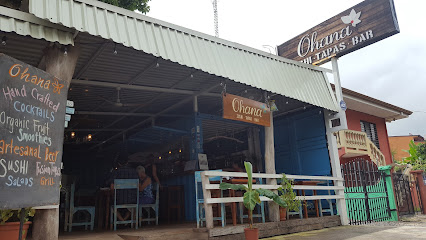
The Pizza Shop
Discover authentic Italian flavors at The Pizza Shop in Jaco - where every slice tells a story of taste and tradition.
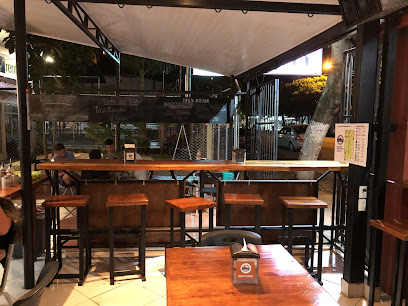
Mono verde
Savor authentic Costa Rican flavors at Mono Verde in Jacó - where culinary tradition meets modern flair.
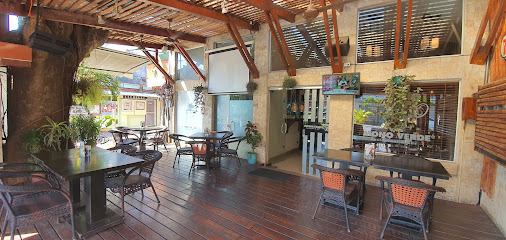
Markets, malls and hidden boutiques
Jacó Walk Shopping Center
Explore the vibrant Jacó Walk Shopping Center for shopping, dining, and entertainment in the heart of Costa Rica’s beautiful beach town.
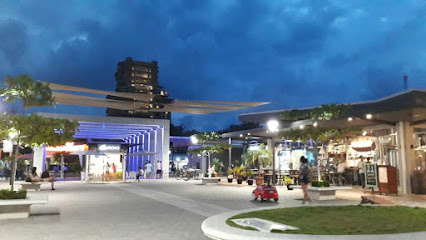
Marveca handmade beachwear
Explore stylish and handcrafted beachwear at Marveca, the essence of Costa Rican coastal fashion in Jaco.
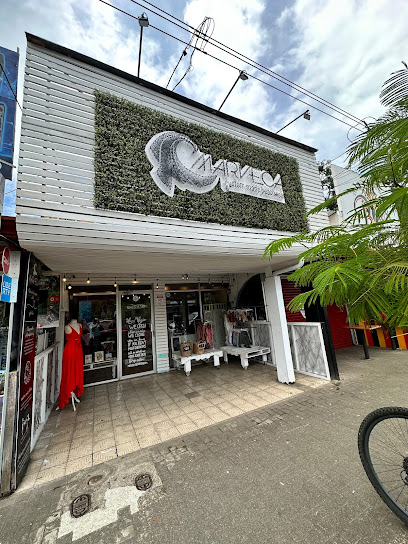
Tico Pod Art House & Gifts
Explore Tico Pod Art House & Gifts in Jaco for unique Costa Rican art and crafts, perfect souvenirs to cherish your tropical getaway.
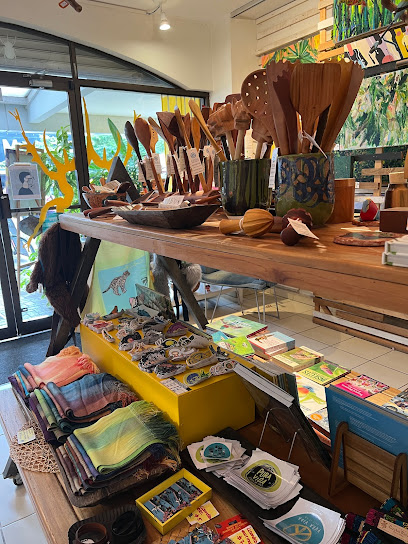
Fruity Monkey Poop / The Costa Rica Coffee Experience
Explore the vibrant world of Fruity Monkey Poop, where unique Costa Rican gifts and quality coffee come together in Jaco.

Bikinis Love Designs
Discover vibrant swimwear at Bikinis Love Designs in Jacó, where style meets comfort for every beach lover.

Il Galeone
Explore Il Galeone in Jaco for a unique shopping experience featuring local crafts and delicious dining options in a vibrant coastal setting.

walter surf shop
Experience the essence of Jaco's surf culture at Walter Surf Shop, where local style meets the thrill of the waves.
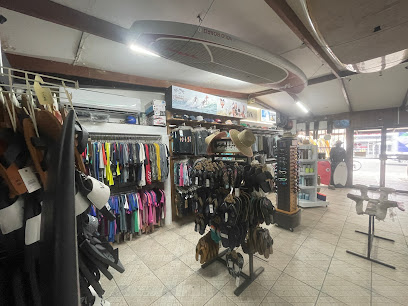
Smoke Valley Jaco
Discover an extensive selection of high-quality vaporizers and accessories at Smoke Valley Jaco, the go-to shop for vaping enthusiasts in Costa Rica.

Dkoko
Explore the vibrant styles of Dkoko in Jaco, where local fashion meets tropical flair for all your wardrobe needs.
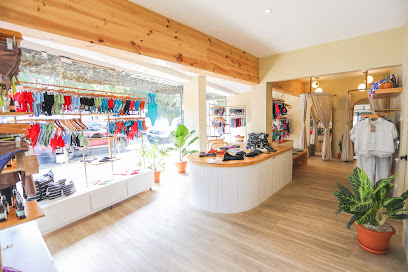
Dreamland Sunglasses & Beachwear Jacó
Explore stylish sunglasses and beachwear at Dreamland Sunglasses & Beachwear in Jacó, a vibrant shopping destination for beach lovers.
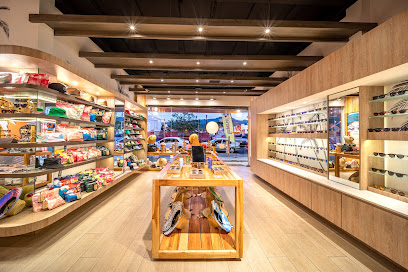
Jass Surf Shop
Discover the ultimate surf shop experience in Jaco, Costa Rica, with top-quality gear and a vibrant beach culture at Jass Surf Shop.
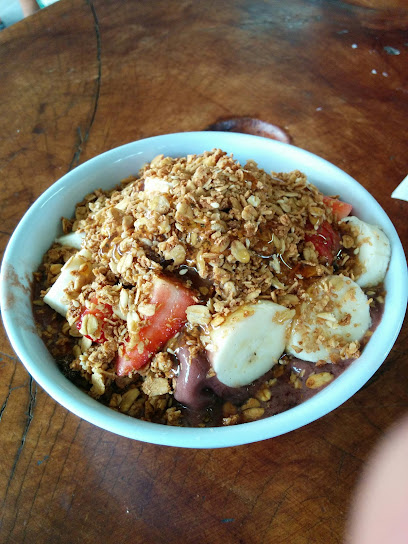
Buena Nena
Discover unique Costa Rican fashion at Buena Nena in Jaco, where local style meets international flair, perfect for every tourist's wardrobe.

Smoke Valley Jaco Smoke Shop
Discover the ultimate vaporizer shopping experience at Smoke Valley Jaco, where quality meets innovation in the heart of Costa Rica's vibrant coastal town.

L'aroma Cigar Shop, Cuban Cigars, Jaco
Uncover the essence of Cuban cigars at L'aroma Cigar Shop in Jaco, where quality meets culture in a cozy atmosphere.
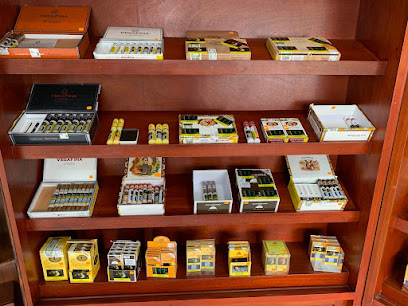
Alana’s Jewelry
Discover unique handcrafted jewelry at Alana’s Jewelry in Jaco, where Costa Rican craftsmanship meets vibrant coastal charm.

Essential bars & hidden hideouts
Clarita's Beach Bar & Hotel
Experience the best of Jaco at Clarita's Beach Bar & Hotel, where delicious grilled cuisine meets stunning ocean views.
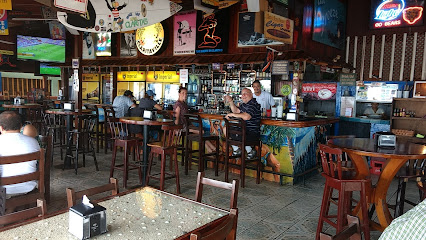
PuddleFish Brewery
Explore Jaco's vibrant craft beer scene at PuddleFish Brewery, offering unique brews and delicious food in a lively atmosphere.
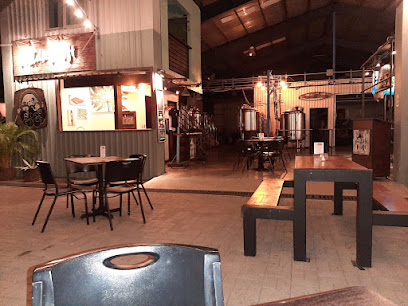
Jacó Bar
Experience the vibrant flavors and lively atmosphere at Jacó Bar, the ultimate grill destination in the heart of Jaco, Costa Rica.
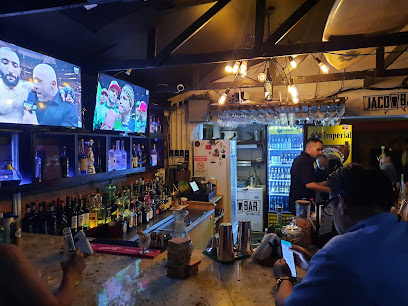
Malecón Bar Restaurante Jacó
Discover the flavors of Costa Rica at Malecón Bar Restaurante Jacó, where fresh ingredients and a lively atmosphere meet stunning ocean views.
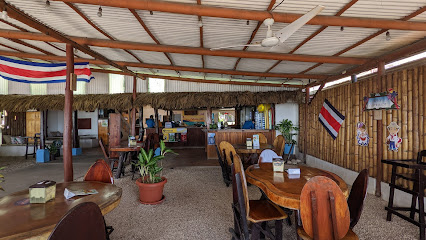
Graffiti Restro Cafe & Wine Bar
Discover the vibrant flavors of Costa Rican cuisine at Graffiti Restro Cafe & Wine Bar, a must-visit culinary destination in Jaco.
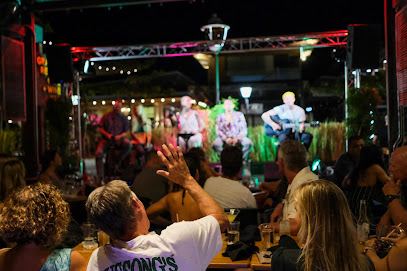
Orange Pub
Experience the vibrant nightlife at Orange Pub in Jaco, Costa Rica, where exceptional drinks, live music, and a lively atmosphere await.
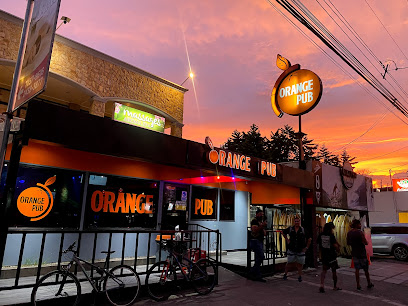
Los Manitos
Experience the vibrant nightlife at Los Manitos in Jaco, where delicious drinks and a lively atmosphere await you.
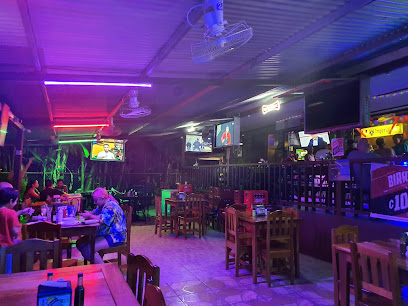
Aloha beach front Bar and Restaurant Jacó
Experience the best of Costa Rican cuisine at Aloha Beach Front Bar and Restaurant in Jacó, where fresh seafood meets stunning ocean views.
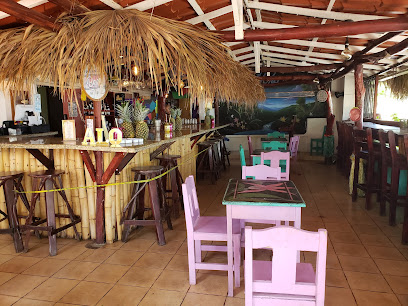
The Beer House
Discover the vibrant nightlife at The Beer House in Jaco, offering a fantastic selection of local craft beers in a lively atmosphere.

Republik Lounge
Experience the electrifying nightlife at Republik Lounge in Jaco, Costa Rica, where vibrant parties, delicious food, and unforgettable memories await.
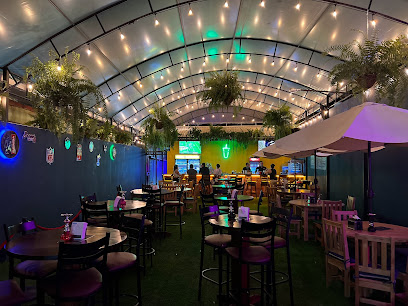
Tiki Bar
Experience the vibrant atmosphere and exotic cocktails at Tiki Bar, a tropical paradise in Jaco, Costa Rica.
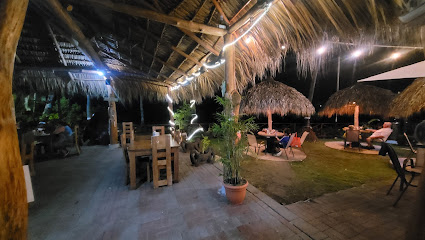
La Garza
Experience the vibrant nightlife of Jaco at La Garza, where refreshing cocktails and a lively atmosphere await every traveler.
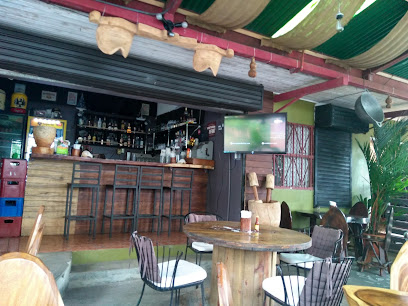
Ohm Lounge Jaco - Most Upscale Bar with DJ
Discover the vibrant nightlife at Ohm Lounge Jaco, where upscale cocktails meet electrifying DJ performances in a stylish atmosphere.

Rolling Thunder Saloon
Discover the lively ambiance and delicious offerings at Rolling Thunder Saloon, a premier bar and restaurant in Jaco, Costa Rica.
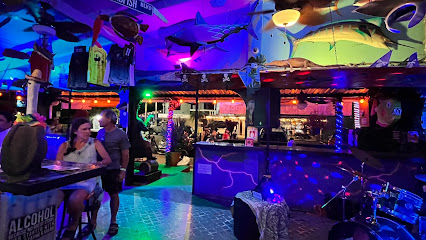
BEACH BAR
Experience the vibrant atmosphere of Beach Bar in Jaco, Costa Rica, where delicious food and refreshing drinks meet stunning coastal views.
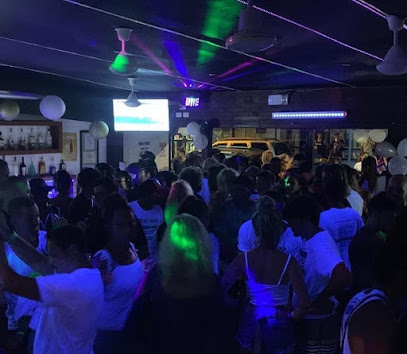
Local Phrases
-
- HelloHola
[oh-la] - GoodbyeAdiós
[ah-dee-ohs] - YesSí
[see] - NoNo
[noh] - Please/You're welcomePor favor/De nada
[por fah-vor/de nah-dah] - Thank youGracias
[grah-see-ahs] - Excuse me/SorryPerdón/Lo siento
[pair-dohn/loh see-en-toh] - How are you?¿Cómo estás?
[koh-moh es-tahs] - Fine. And you?Bien. ¿Y tú?
[bee-en. ee too] - Do you speak English?¿Hablas inglés?
[ah-blahs een-glays] - I don't understandNo entiendo
[noh en-tee-en-doh]
- HelloHola
-
- I'd like to see the menu, pleaseMe gustaría ver el menú, por favor
[may goo-stah-ree-ah vehr el meh-noo, por fah-vor] - I don't eat meatNo como carne
[noh koh-moh kahr-neh] - Cheers!¡Salud!
[sah-loohd] - I would like to pay, pleaseMe gustaría pagar, por favor
[may goo-stah-ree-ah pah-gar, por fah-vor]
- I'd like to see the menu, pleaseMe gustaría ver el menú, por favor
-
- Help!¡Ayuda!
[ah-yoo-dah] - Go away!¡Vete!
[veh-teh] - Call the Police!¡Llama a la policía!
[yah-mah ah lah poh-lee-see-ah] - Call a doctor!¡Llama a un médico!
[yah-mah ah oon meh-dee-koh] - I'm lostEstoy perdido
[es-toy pair-dee-doh] - I'm illEstoy enfermo
[es-toy en-fehr-moh]
- Help!¡Ayuda!
-
- I'd like to buy...Me gustaría comprar...
[may goo-stah-ree-ah kohm-prar] - I'm just lookingSolo estoy mirando
[soh-loh es-toy mee-rahn-doh] - How much is it?¿Cuánto cuesta?
[kwan-to kwehs-tah] - That's too expensiveEso es demasiado caro
[eh-so es deh-mah-see-ah-doh kah-roh] - Can you lower the price?¿Puede bajar el precio?
[pweh-deh bah-har el pree-see-oh]
- I'd like to buy...Me gustaría comprar...
-
- What time is it?¿Qué hora es?
[keh oh-rah es] - It's one o'clockEs la una
[es lah oo-nah] - Half past (10)Media (10)
[meh-dee-ah (dies)] - MorningMañana
[mah-nyah-nah] - AfternoonTarde
[tahr-deh] - EveningNoche
[noh-cheh] - YesterdayAyer
[ah-yehr] - TodayHoy
[oy] - TomorrowMañana
[mah-nyah-nah] - 1Uno
[oo-noh] - 2Dos
[dohs] - 3Tres
[trehs] - 4Cuatro
[kwah-troh] - 5Cinco
[seen-koh] - 6Seis
[says] - 7Siete
[see-eh-teh] - 8Ocho
[oh-choh] - 9Nueve
[nweh-veh] - 10Diez
[dyes]
- What time is it?¿Qué hora es?
-
- Where's a/the...?¿Dónde está...?
[dohn-deh es-tah] - What's the address?¿Cuál es la dirección?
[kwal es lah dee-rehk-syon] - Can you show me (on the map)?¿Puede mostrarme (en el mapa)?
[pweh-deh mohs-trar-meh (en el mah-pah)] - When's the next (bus)?¿Cuándo es el próximo (autobús)?
[kwan-doh es el proh-ksee-moh (ow-toh-boos)] - A ticket (to ....)Un boleto (a ....)
[oon boh-leh-toh (ah)]
- Where's a/the...?¿Dónde está...?
History of Jaco
-
Long before Jaco became a hotspot for tourists, it was inhabited by indigenous tribes. Archaeological evidence suggests that the area was home to the Huetar people, who lived in the Central Pacific region of Costa Rica. The Huetars were known for their complex social structures and their expertise in agriculture and pottery.
-
With the arrival of Spanish explorers in the 16th century, the indigenous populations faced significant upheaval. The Spanish brought new diseases and enforced labor systems, drastically reducing the native population. Despite this, the area remained relatively undeveloped compared to other parts of Costa Rica.
-
In the mid-20th century, Costa Rica saw an increase in the development of its coastal areas. Jaco, with its beautiful beaches and strategic location, began to attract attention. Infrastructure improvements, such as the construction of the Costanera Sur highway, played a significant role in making Jaco more accessible.
-
The 1980s marked a turning point for Jaco as it began to emerge as a tourist destination. The town's proximity to San José, just a couple of hours drive away, made it an ideal spot for weekend getaways. Surfing became particularly popular, with surfers from around the world flocking to Jaco's consistent waves.
-
In recent years, Jaco has seen a surge in real estate development and international investment. High-rise condos, luxury resorts, and a variety of dining and entertainment options have transformed the once sleepy fishing village into a bustling town. Despite rapid development, efforts have been made to preserve the natural beauty that makes Jaco so appealing.
-
Jaco hosts several cultural festivals throughout the year that celebrate Costa Rican traditions and community spirit. Events like the Jaco Arts Festival and the annual Surf Fest bring together locals and tourists alike, showcasing the town's vibrant culture and fostering a sense of community.
Jaco Essentials
-
Jaco is located on the Pacific coast of Costa Rica, approximately 100 kilometers from the capital, San José. The most convenient way to reach Jaco is by flying into Juan Santamaría International Airport (SJO) in San José. From the airport, you can rent a car, take a shuttle service, or use public buses to get to Jaco. The drive typically takes around 1.5 to 2 hours via Route 27 and Route 34. Shuttle services offer door-to-door service and are a comfortable option for those not wanting to drive.
-
In Jaco, the most common modes of transportation are taxis, rental cars, and bicycles. Taxis are readily available and relatively inexpensive. Rental cars provide the flexibility to explore the surrounding areas at your own pace. Bicycles are a popular way to get around town and can be rented from various shops. Public buses also operate within Jaco and connect to nearby towns, offering an affordable option for longer trips.
-
The official currency in Costa Rica is the Costa Rican Colón (CRC), but US dollars are widely accepted in Jaco. Credit and debit cards are commonly used in hotels, restaurants, and shops. ATMs are available throughout Jaco, and it is advisable to carry some cash for smaller establishments and street vendors. Ensure you notify your bank of your travel plans to avoid any issues with your cards.
-
Jaco is generally a safe destination for tourists, but it is important to take standard precautions. Avoid walking alone at night, especially in poorly lit areas and on the beach. Keep an eye on your belongings in crowded places. Areas such as the central beach and certain parts of downtown have higher incidences of petty crime targeting tourists, so remain vigilant and avoid displaying valuables.
-
In case of an emergency, dial 911 for immediate assistance. Jaco has a local police station and medical facilities, including a public clinic (EBAIS) and private medical centers. It is recommended to have travel insurance that covers medical emergencies. Pharmacies are available in town for minor health issues and over-the-counter medications.
-
Fashion: Do wear lightweight, breathable clothing suitable for a tropical climate. Don't wear overly revealing attire in public settings. Religion: Do respect local customs and traditions. When visiting churches, dress modestly and act respectfully. Public Transport: Do be polite and considerate to fellow passengers. Don't eat or drink on public buses. Greetings: Do greet people with a friendly 'Hola' or 'Buenos días'. A handshake is common in formal settings. Eating & Drinking: Do try local dishes and fresh seafood. Don't refuse food or drink offerings, as it may be considered impolite.
-
To experience Jaco like a local, visit the weekly farmers' market (feria) for fresh produce and local goods. Engage with locals and practice your Spanish; even basic phrases are appreciated. Enjoy a sunrise or sunset beach walk, as these are treasured local activities. Don't miss out on trying 'gallo pinto' for breakfast and fresh ceviche from a beachside vendor.
Trending Landmark in Jaco
Nearby Cities to Jaco
-
Things To Do in Manuel Antonio
-
Things To Do in San Jose
-
Things To Do in Monteverde
-
Things To Do in La Fortuna
-
Things To Do in Guanacaste
-
Things To Do in Liberia
-
Things To Do in Tamarindo
-
Things To Do in Playa Flamingo
-
Things To Do in Puerto Viejo
-
Things To Do in San Juan del Sur
-
Things To Do in Ometepe
-
Things To Do in Volcan
-
Things To Do in Rivas
-
Things To Do in Boquete
-
Things To Do in Bocas del Toro








